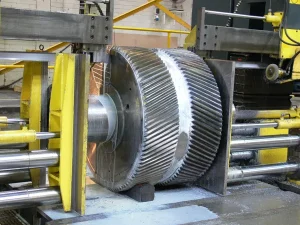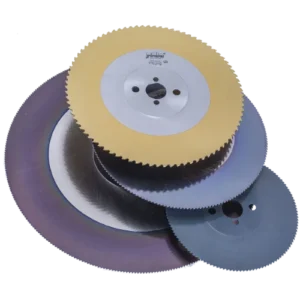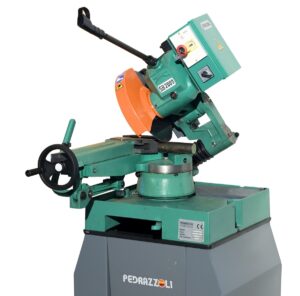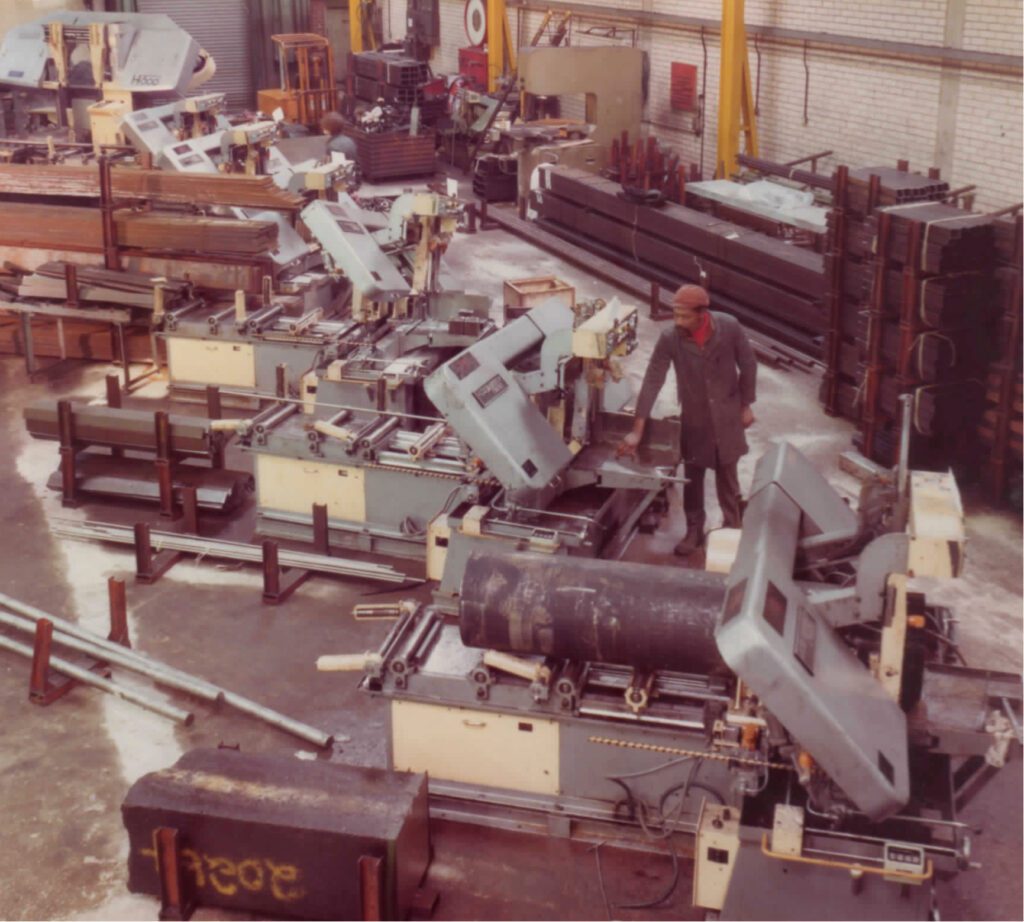Bandsawing metal FAQs
At Accurate Cutting, we love answering your questions about sawing, so take a look at some of our FAQ answers. Some of the questions might seem very basic to a few of you, but they are repeatedly asked so well worth including.
Almost all metals as long as they are sized within our handing and cutting capability, excepting toxic or ionising metals.
And yes, there is such a thing as too small for us to cut. The smallest width/thickness is governed by the blade tooth pitch, which relates to the blade size, which relates to the saw size.
Basically, if it's over 5mm wall thickness tube, or 10mm thick plate or blocks up to 2000mm round or square, or up to 1000mm high and less than 6000mm long, we can cut it.
Call to explore our ability to cut your material.
We have saws that can cut cross sections of between 1000mm x 6000mm, or 2000mm x 2000mm round or square, or for volume bar cutting from 20mm to 560mm.
Our maximum lift weight from a flat bed vehicle with accessibility for an overhead crane is 24 tonnes. For pallets, boxes or crates offloaded from a curtain sided vehicle, our FLT is 4 tonnes.
In theory, we can cut the thinest of materials, however there is a practical minimum.
All our saws are large heavy duty machines designed to cut large sections (up to 2000mm thick) which means large wheels, large blades, and large pitches. When sawing there some basic rules of thumb that suggest there should be no fewer than 3 teeth in the cut at the same time. However, our blade pitches start at 2.1mm, which indicates a minimum material thickness of just over 6mm.
Cutting with fewer teeth engaged results in shock loading on teeth risking breakage, or, material deformation. Either way, the feed rate is compromised which makes the cut less econimical.
We have sawn a wide range of materials in many forms over our 55 years of operations.
Castings, forgings, bars, blocks, plate, tubes, rings, scrap, semi and fully machined items for inspection, automotive parts, aerospace parts, composite parts, fabricated parts, welded parts, and the odd meteorite if they're of the iron type... Simply put, if it's made of metal we've probably cut one at some point.
Call or email (perhaps with drawings or photos) and ask - we can probably help.
We have a combination of fork lift truck and overhead cranes for loading and unloading goods vehicles.
If the goods are small enough to be palletised and weigh less than 4000kg, we can load and unload curtain sided vehicles.
If the goods are heavier than 4000kg, we must use the overhead cranes, which means either a flat bed trailer, or, a curtain sided vehicle that can fully retract the roof, roof bar above the doors and have the doors fully open. Additionally, if it is a fixed or nor removable side, there must be sufficient safe movement space so that the load can be slung from either chains or slings at the mid point.
Depending on the type or dimensions of the finished items, they may be loaded as an item onto battons on a vehicle, or, returned to the original shipping crates for return.
For high volumes of small parts produced, a bin or pallet (with collars) may be appropriate.
For very small parts, we supply small "hessian" white sacks to keep the components secure yet also separate from other sizes.
Accurate can supply both the sacks and pallets depending on the requirement, and even if not quoted or included on a PO will invoice for any used wher the safety of the product is required.
The material belongs to you, the customer. Accurate endeavours to return as much/all of the surplus or waste material (excluding swarf unless explicitly requested to) along with the cut product.
The primary problem is that of packaging as the offcuts can either be very small pieces, or, awkwardly shaped and not conducive to straightforward packaging. Customers may supply their own bins or other suitable containers to have offcuts returned in, or for small offcuts, a hessian sack may be used. But in most cases, offcuts are strapped to a pallet and returned with the product unless it's unsafe to do so.
There is no guarrantee that remnants and swarf are contaminant free, or that any swarf requested for return will be all of the swarf. The wet sumps on the saws means swarf is mixed and not all accessible other than after a full clean down/empty.
And if the cost of returning offcuts/scrap isn't recoverable through the sale of the scrap, we can put it in our scrap skip on site.
Unless the material exhibits unexpected cutting characteristics that cause unduly excessive blade wear and premature failure, or the cutting times need to be increased, then the quotes are accurate.
Where we have problems is that sometimes the material is not in the shape and size expected requiring additional saw time, or the material is harder than indicated/expected, or, the material has internal stresses (usually cooling too fast or unevenly from forging or casting etc) which are invisible to the eye but reveal themselves once a cut is made through a stress zone unbalancing the internal stresses. These new stresses can cause material deformation (bending), cracks and even explosions where a new stress point is created in front of the blade tooth whilst cutting, or push the material away from clamps causing a curved cut.
We've had material jump off saws on rare occaisions.
Alternatively the stresses close up the cut which pinches on the back edge of the blade, stalling it in the cut. There's only one way to extract the blade and that is to cut it through above and below the points where it exists the material, replace with a new blade and start the cut again from the opposite end.
There is at least one additional blade used that is not costed in to the quote at this point.
We endeavor to ensure all cuts are flat and straight. However there are circumstances that due to the nature of the process can result in a run off or bowed/dished cut. But this is what tolerances are for. We suggest realistic and achievable tolerances for cut dinemsions based on the material, section and 55 years of experience.
The careful selection of the most appropriate blade, feed and speed for the job ensures that we achieve good cuts.
Over the life of the company we have made many hundreds of thousands of cuts in thousands of tonnes of material, from Aluminium, Zirconium, Titanium, Copper, Brass, Steels, and alloys of any and all.
We cut for any manufacturing sector including shipping, automotive, aerospace, construction, civil engineers, stockholders, individuals and art. If it's made of metal, there's a change we've cut one.
If you need more in-depth help, just give us a call
Contact us about our cold cutting services to find out what we can achieve for you.





